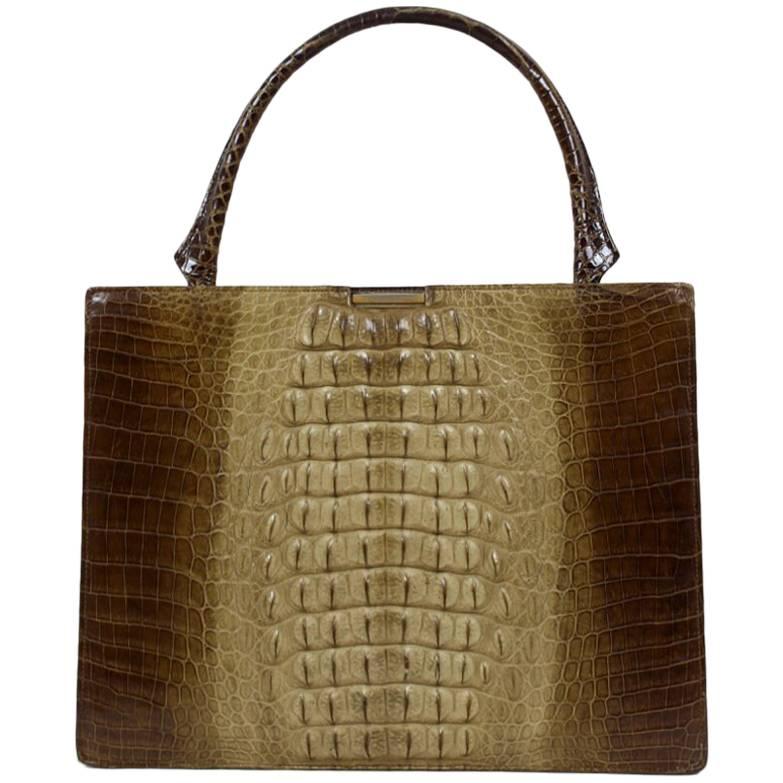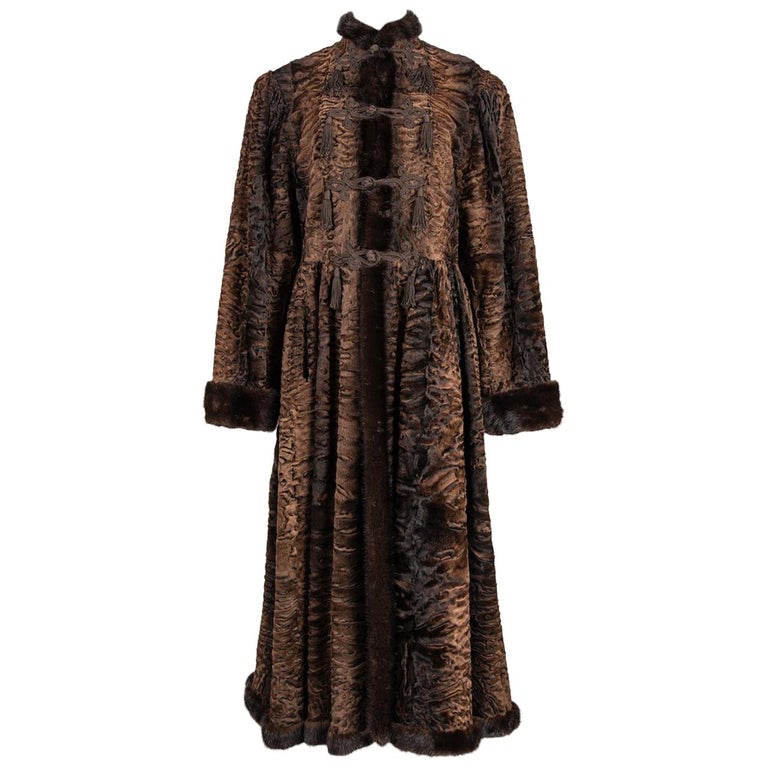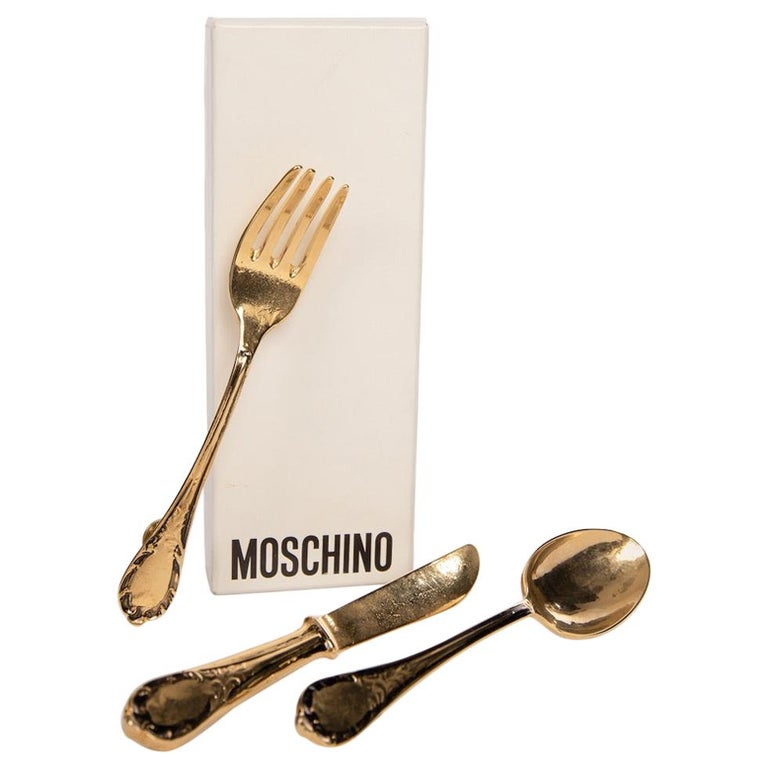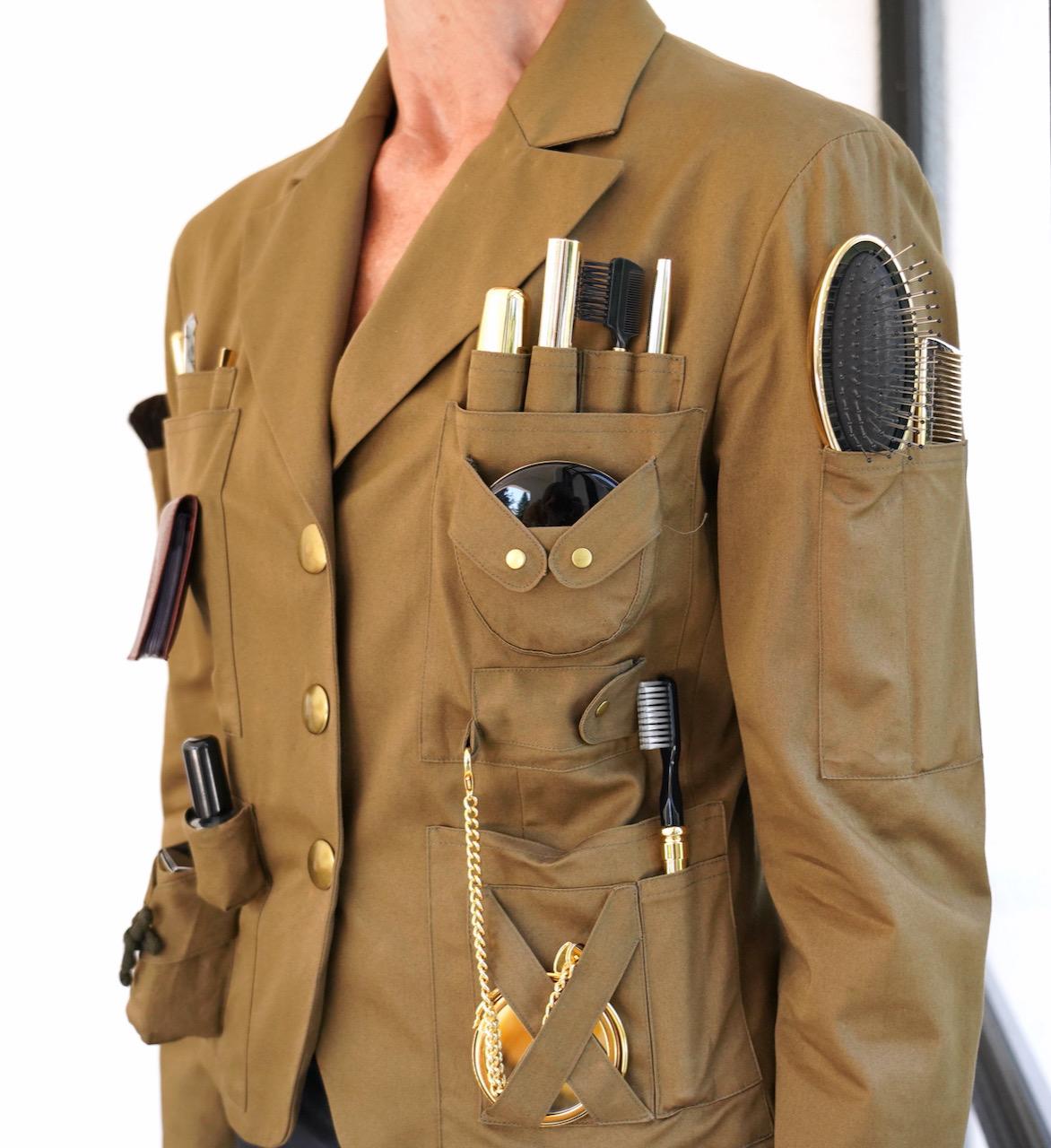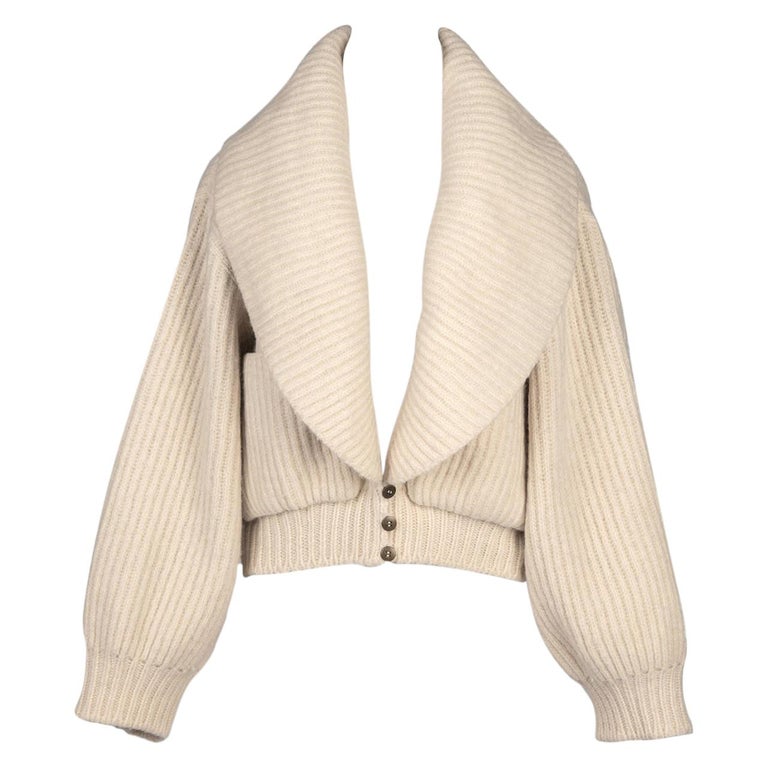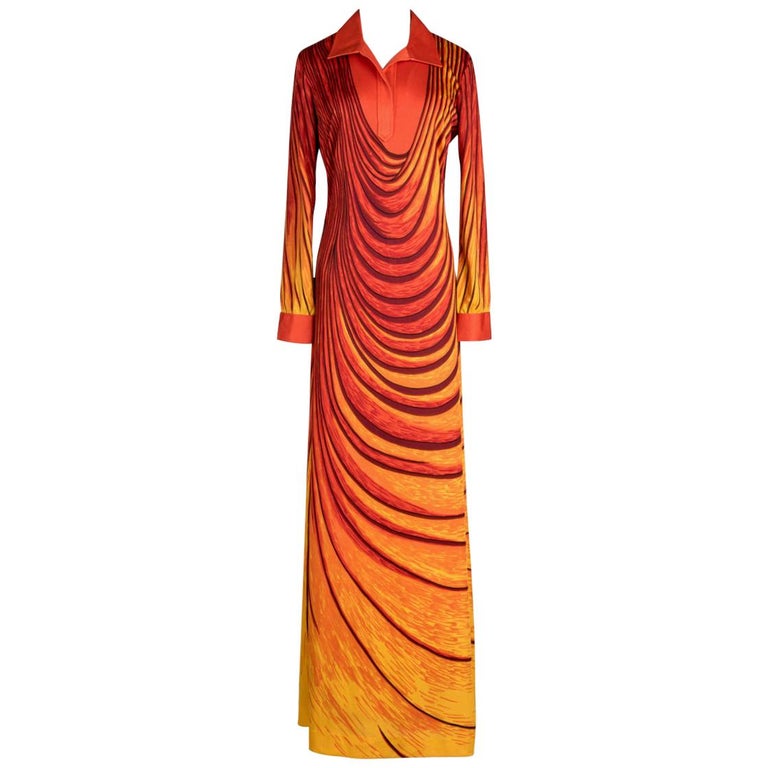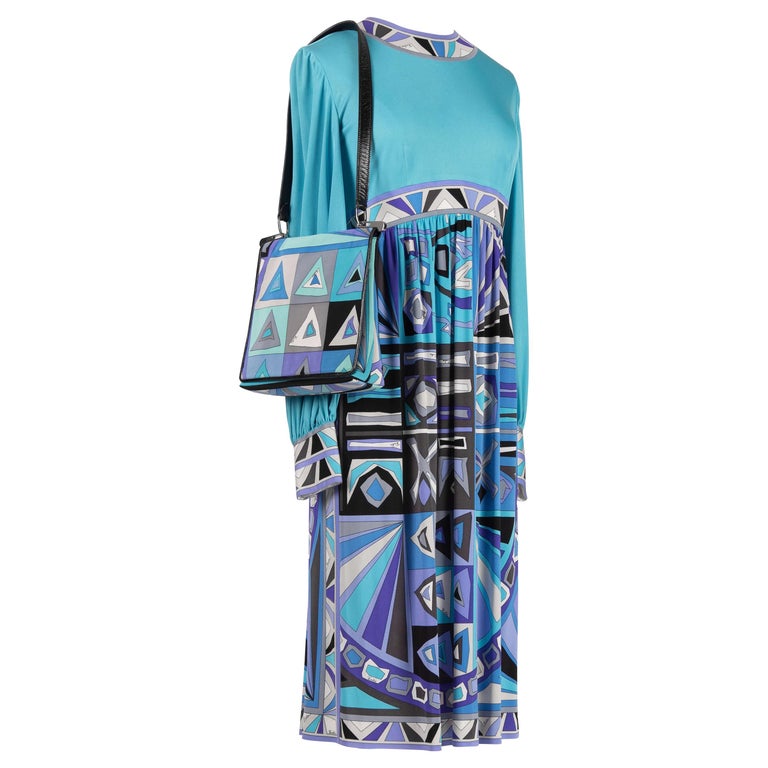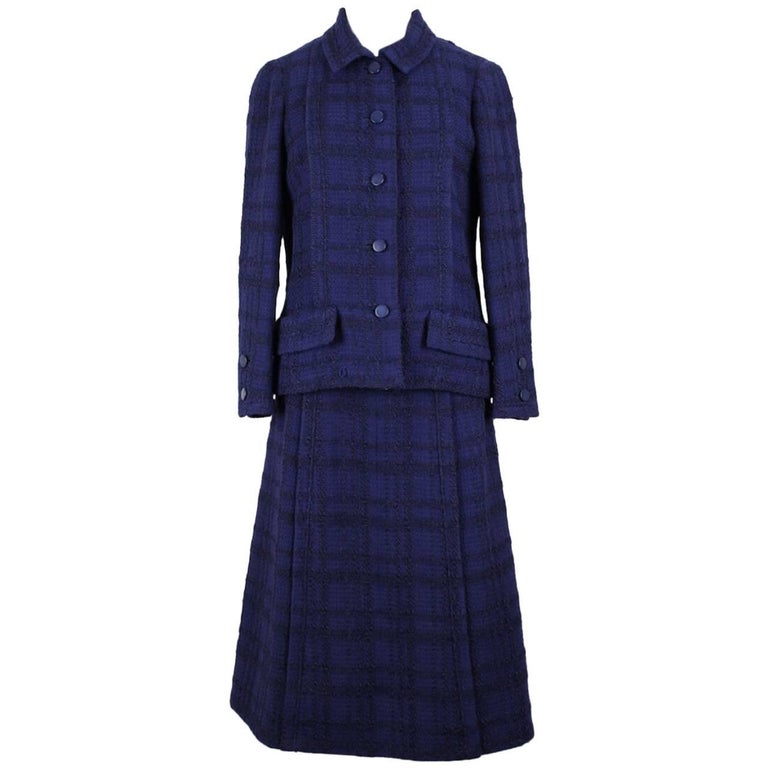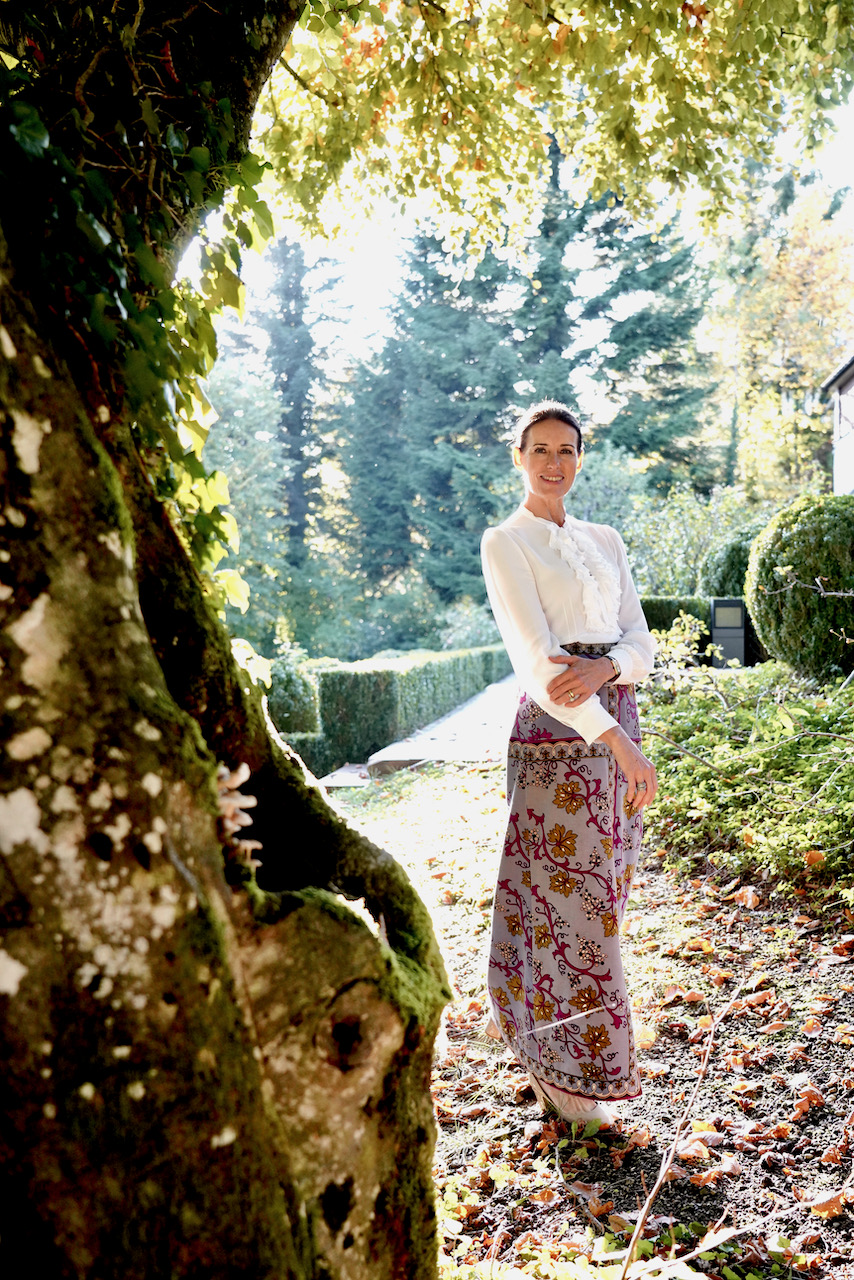
December 12, 2021An eye for beauty came naturally to Elisabeth Gerhold, founder of Munich-based luxury vintage-fashion boutique Oh! Jackie. “My father collected antiques,” she explains, “and my mother was really fashionable.” Growing up in a home furnished with exquisite Art Deco and Art Nouveau furniture, with a mother bedecked in Emilio Pucci, Halston and Yves Saint Laurent designs, she might seem to have been destined for her current calling. And in fact, that’s how she sees it. “Really, both passions were passed on to me,” she says.
Although Gerhold began collecting fashion in her youth, her professional commitment to the field came later. At university, she studied law and marketing, then worked at global branding agency Young & Rubicam before leaving to raise her son and daughter. As they entered their teens, she pondered what to do next. In high school, she’d dreamed of opening a small antiques store. Was that dream still valid? It wasn’t immediately clear. Over the course of a year, Gerhold considered her passions, her interests. She considered her closet, in which the fruits of a lifelong interest in vintage garments had accumulated. Then, she recalls, “one day I woke up and I thought, OK, it’s totally obvious.” She would open an online store selling vintage clothing and accessories. She would name it in honor of her ultimate style icon, Jacqueline Kennedy Onassis, aka Jackie O.
Gerhold set a goal of launching Oh! Jackie with 100 pieces. She started haunting auctions, flea markets and, of course, shopping online. It was around 2012 and vintage clothing had yet to catch on in Germany, so she didn’t have local mentors. But she’d studied law at university, “so I know how to do research,” she notes, describing her education in vintage as “studying object by object.” Say she found a 1960s Emilio Pucci jersey dress. With the garment in front of her, she’d consult books and the Internet, delving into the designer’s origins, asking what inspired the pattern and why he chose jersey. Slowly, deliberately, she expanded her understanding one designer acquisition at a time. Ultimately, the process of establishing her online shop, from lightbulb moment to launch, took about two years.
Now, nearly a decade after founding Oh! Jackie, Gerhold still experiences a thrill with each find. Before listing new garments, she likes to try them on, to get a sense of fit — a good strategy, for sure, but one that presents a problem. After all, she was a collector first, and that instinct hasn’t dissipated, especially when something looks good on her. In that case, she says, “I tell my husband, ‘I’m afraid I have to keep it.’ ” Then, for a week or so, she mulls the idea of letting go. Inevitably, within 10 days, she becomes willing to part with the item. She lists it on the site and moves on.
Here, Gerhold speaks with Introspective about the wit and wonder of Moschino, how to assess condition in a vintage garment and the resurgence of iconic designs on the runway

You have a significant collection of vintage Moschino. What is it about Moschino you find particularly special?
Moschino was a kind of a fashion philosopher. He expressed critically what he thought about the fashion system and did so not only in words but in design. Not in a rude way — he had such a great sense of humor. He told British GQ in 1994, “Funny clothes have to be extremely well made, because that is where you find the chic. It’s easy to be funny with a white T-shirt, but it’s more clever with a mink coat.” How clever he was to criticize the system in which he worked and remain successful anyway!
I have a boxy pink Moschino jacket that looks like a classic Chanel jacket. But if you take a closer look the buttons have smiley faces. His humor is sometimes like this, a second glance. And other times it’s obvious, bold and loud.
Is there one piece you have on offer on 1stDibs that exemplifies Moschino’s unique perspective?
The survival jacket. It’s a safari jacket with a lot of pockets. And inside the pockets are beauty tools. About sixteen of them, including lipstick and nail polish, a tweezer, perfume, a brush. And on the back is written in black “survival jacket.” It’s a uniform for a woman in the urban jungle.
Can you offer advice on how to incorporate great vintage accessories into a modern wardrobe?
Vintage accessories are a really good way to get something special without spending a fortune.
I think, when talking about vintage accessories, handbags are very important. I’m not talking about Hermès, Chanel and other designer handbags but just, for example, a crocodile 1960s frame bag. Imagine wearing this with a pair of jeans and maybe a white shirt. It’s an easy way to create a style with personality.
I wore a brooch by Moschino to a client dinner. It was a cutlery set, with a knife, spoon and fork. It was fantastic — everyone came [to see it] and it was a conversation starter. That’s the effect when you wear something special.

Are you seeing an increase in popularity of a certain style, era, creator?
There is a quite interesting trend with the big fashion houses releasing re-editions of iconic pieces. I’ve been observing this increasingly over the past few years. For instance, Alaïa. I have a cream-colored knit jacket by Alaïa. It is an iconic piece from 1984, when it was photographed by Peter Lindbergh and was really everywhere in advertising campaigns and so on. In 2018, Alaïa, redid it — almost exactly the same. This trend is fantastic, because it creates a demand for the originals. Other designers are doing this as well. Dolce & Gabbana, for example, had a piece in their recent Fall/Winter collection that was originally from 1991.
What should a buyer look for when checking the condition of a vintage garment?
Obviously, everyone wants to have pieces that are in perfect shape, without holes and without spots and so on. Of course, this also has an effect on the value of the piece. If you are a collector looking for a good investment, you should really look for just perfect. If there is no condition report, ask questions. Are there any holes or spots? Are there open seams? Has it been altered? Are the zippers working, the buttons complete? If we’re talking about something really high-end, like a Chanel jacket with special buttons, it’s really terrible if there’s one button missing.

What item do you love too much to sell and why?
I will never, ever sell my mother’s Emilio Pucci floor-length terry-cloth beach cape from the early nineteen seventies. It’s purple, and it is incredible — iconic and rare. At the Pucci palace in Florence, they keep these capes [on display] under glass covers. You don’t find them often, because they are made from terry cloth and were used a lot, so not many survived.
What item do you regret having sold and why?
I love almost all my items. But I have to say, none. Because I think each of my pieces ended up where it should be. For example, I had a Christian Dior couture evening dress, and I wrote to the Dior heritage department to ask if they would be interested. It is now part of their collection, and I love that.

What would be your dream item, either from a museum or from a private individual, and why?
Yves Saint Laurent’s Le Smoking, the tuxedo. I would love it for my own collection, it’s exactly my style. When he designed it in 1966, first for his couture line, his clients didn’t like it. And then, he produced it for his Rive Gauche line for younger women. There, it was an incredible success. It was so iconic that he had it in every single collection until he stopped in 2002. It’s really an absolutely revolutionary piece of fashion history.



